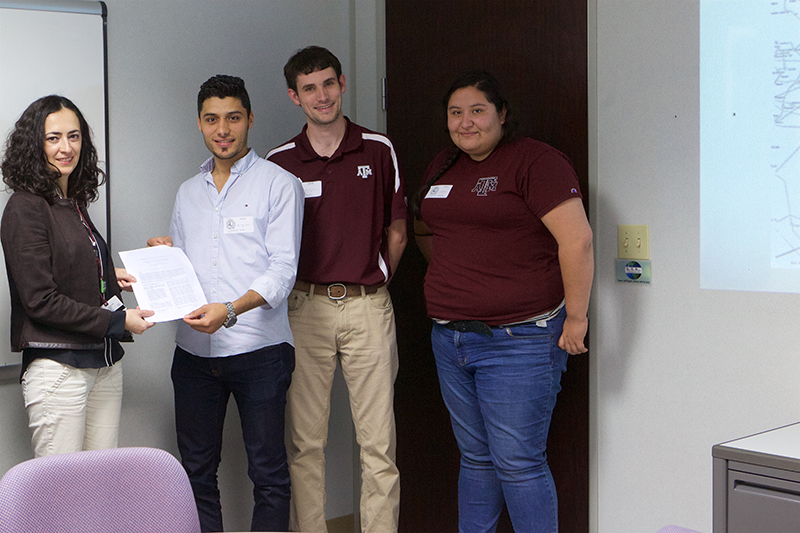
Students and faculty in the Department of Nuclear Engineering at Texas A&M University presented a preliminary risk assessment to Fatma Yimaz, supervisor for probabilistic risk assessment at the South Texas Project Nuclear Operating Company (STP). Their assessment determined the level of risk the plant could have during an onsite electrical power blackout following the loss of the plant switchyard from weather-related phenomenon, such as an intense hurricane. The students and faculty team presented their findings to the probabilistic risk assessment group at STP as a part of their directed study class.
The class, NUEN 685, is taught by Ernie Kee, associate professor of practice with the department. Graduate students Marilyn Delgado, Mohammad Hawila and Tyler Hughes participated in the project.
“In this preliminarily study we found that the risk for station blackout was significant in the event of a hurricane,” Kee said. “So the next thing we will look into is if we conditionally know that a hurricane will most likely cause a loss of onsite power that can lead to station blackout, what kind of compensatory actions can we put in place to prevent this or make recovery after a blackout faster?”
The team’s approach involved assessing the conditional risk of a hurricane causing a blackout at both an individual unit level and at a multi-unit level, and found that the likelihood of a station blackout was around 4 to 50 percent. Following studies will look at what kind of temporary compensatory options STP can put in place in light of the project’s conditional risk focus.
“The reason we chose this conditional risk perspective for this project is because STP would not want to have hurricane-specific safety equipment and compensatory measures in place all the time, because hurricanes that could pose significant risk to the site are rare,” Kee said. “Because the weather service provides a lot of information about hurricane intensity and tracks well in advance of arrival, we want to see what can be done ahead of time to prepare for this event. We want to minimize the possibility that onsite power is lost, and if it is, reduce the time it would take to recover power.”
The visit provided a positive experience for the students involved. Kee said it helped them become familiar with the kinds of issues power plants would face in severe weather events, taught them how nuclear power plant basic electrical power systems are laid out and provided additional hands-on industry experience.
“We had a lot of fun, Kee said. “They are great students, and STP had an interesting problem for us to understand, evaluate and in this case, move forward on with additional studies.”